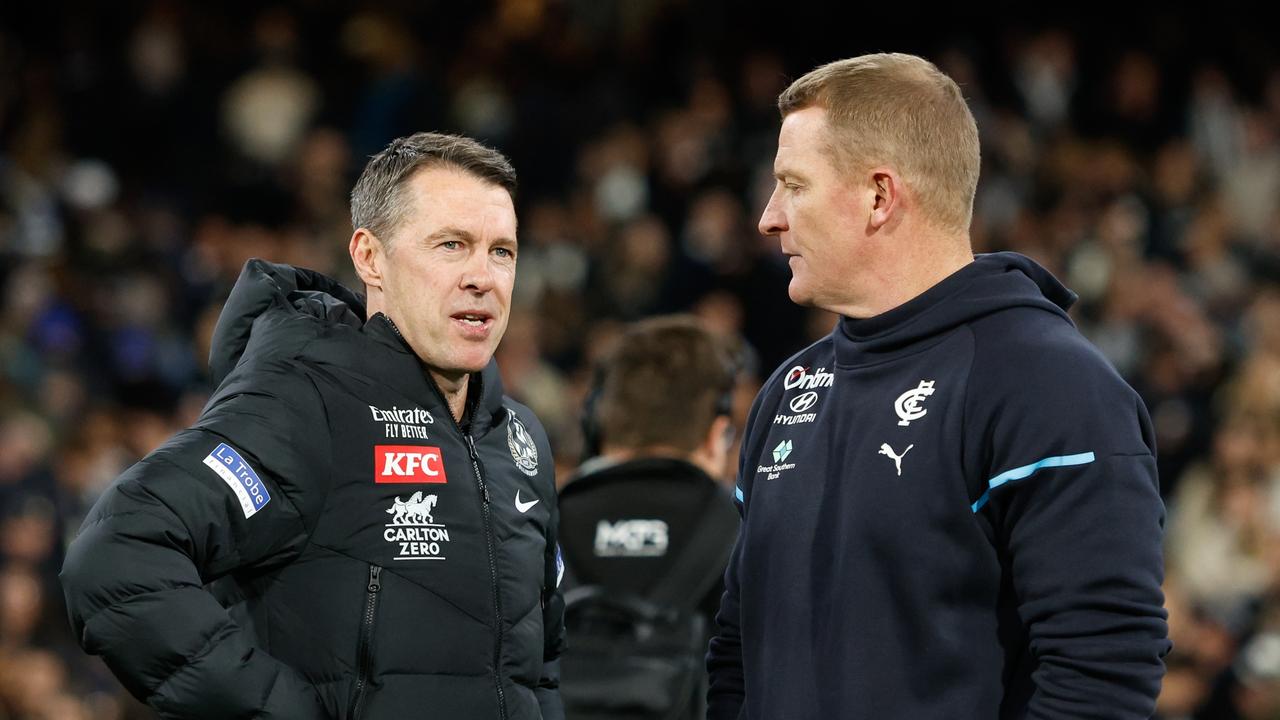Mick McGuane explains how Melbourne can fix its ‘Dee-Muda Triangle’ mystery inside forward 50m
Melbourne are the AFL’s jigsaw puzzle. Pieces of their game fit well, but there is one glaring issue with their game. MICK MCGUANE breaks down the issue and explains how to fix it before it’s too late.
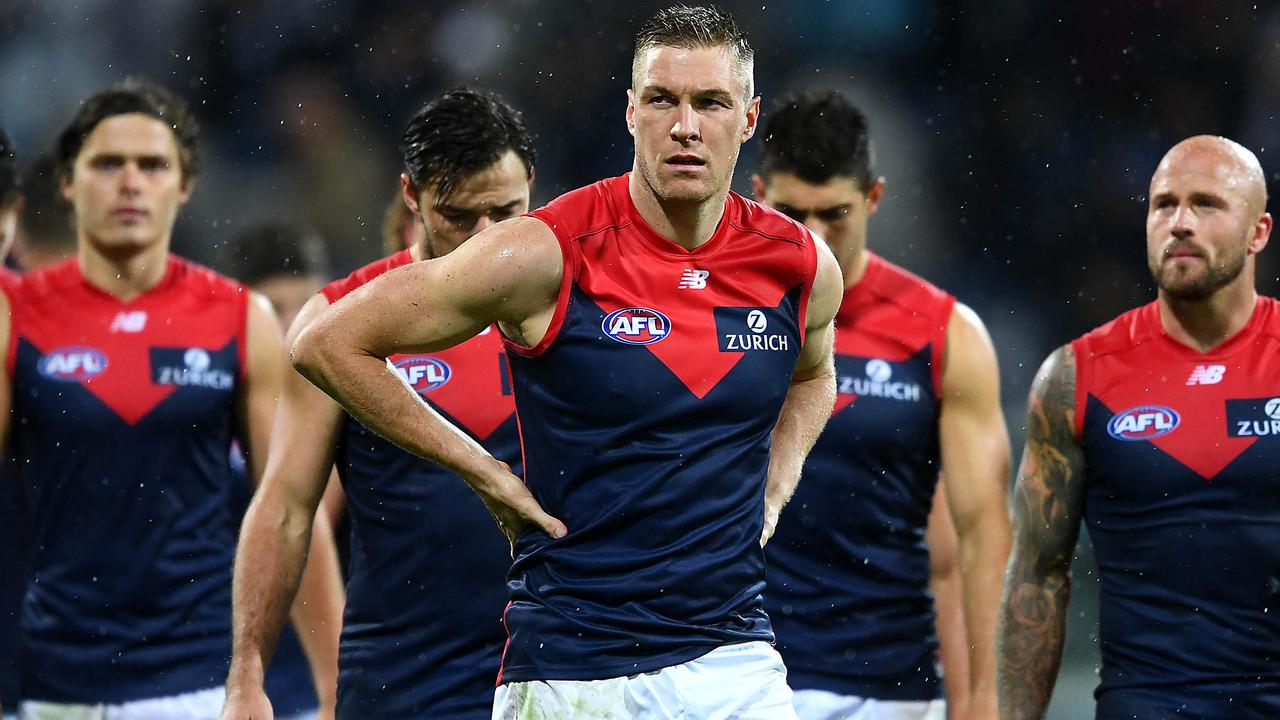
Expert Opinion
Don't miss out on the headlines from Expert Opinion. Followed categories will be added to My News.
The mystery of Melbourne’s game style revolves around its territory game.
It’s a jigsaw puzzle. Pieces of their game fit well, despite a 0-2 start to 2019, but their mids-to-forwards connection clearly doesn’t.
Simon Goodwin and his players must get greater efficiency with their inside 50 returns, starting against Essendon.
ROUND 3 TIPS: WHO DO THE EXPERTS LIKE?
ROUND 3 TEAMS: SEE ALL THE INS AND OUTS
SUPERCOACH: WHAT YOU NEED TO KNOW FOR R3
Is it fixable? Yes.
But are they slow learners? Perhaps.
There is no sugar-coating this. Poor efficiency will cost them games unless they can resolve these issues.
The Demons should have finished in the top four at the end of the home-and-away season last year, considering they lost five games with 60-plus forward entries. That’s extraordinary.
To finish fifth at the end of the regular season was admirable, but imagine if they had won two more games with 60-plus inside 50s. We would have been talking about a different dynamic at the pointy end if they had secured the double chance.
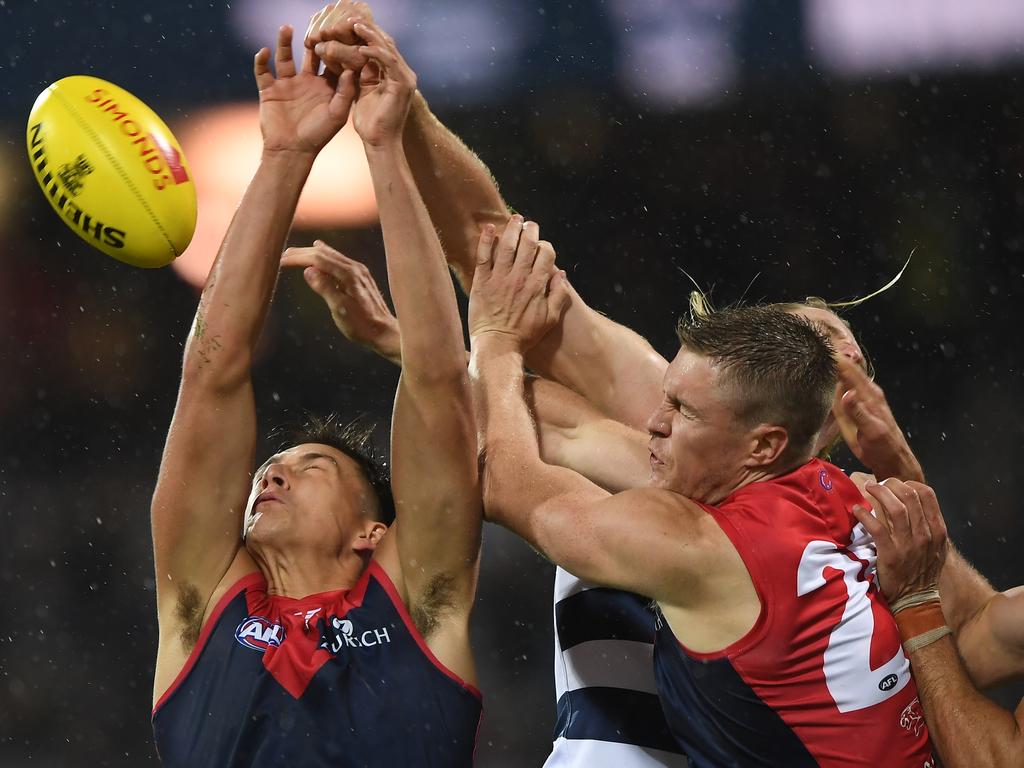
There are small margins of error in AFL football, but they can be the difference between success and failure.
The mystery of their inside 50 efficiency — call it the Dee-muda Triangle — is an area that must be fixed immediately if they are to succeed.
My three-point plan to fix it:
1 BALL USE AND DECISION-MAKING
Good ball use and decision-making, which leads to retention rate, was one of Melbourne’s strengths last year.
When they kicked the ball into the forward 50m, they were ranked second behind Geelong for retaining it at 50 per cent.
Two rounds into this season, the Demons are ranked 18th.
The aspects that the ball carrier must get right include the direction of the kick (deep or shallow); never kick to a contest in the “trampoline zone” (30-60m from goal directly in the corridor); and advantage kicks to the forwards.
2 STRUCTURE
You must have competitive forwards. There seems to be a failure to separate and isolate from each other.
Tom McDonald, Jake Melksham, Sam Weideman and Christian Petracca need to be able to better exhibit their selflessness.
3 CONVERSION
It’s one of the most underestimated stats. Accuracy is a responsibility. It cannot be shirked.
MISSED OPPORTUNITIES
It seems strange to talk this way about a team that lost by 80 points to Geelong, but things could have been a little different but for missed opportunities.
At halftime, the scoreline was Geelong 46 to Melbourne 22.
In the first two minutes of the third term Melksham missed everything with two kicks for goal. Those two shots resulted in two boundary throw ins. That’s fixable.
The third entry saw Weideman almost mark, but spill it 35m out. Fixable.
Then Christian Salem hacked it on his left foot for better composure. The result was a boundary throw-in, from which Angus Brayshaw’s quick kick saw Alex Neal-Bullen spill a mark 15m from goal.
A fifth entry saw a committed Neville Jetta win the ball and with good composure find Weideman in front, but he hooked the kick.
After the kick-in, the Demons won the ball across half back then went back in at speed before Petracca mistimed his jump and went at the ball one-handed when he had Tom Stewart cooked. That’s fixable.
Too much over-finessing the ball before it landed in the arms of McDonald, who hit the post. Stiff.
Jack Viney won a free on the boundary, had a left foot snap and overcooked it. Another behind.
Then came a hurried left foot from Nathan Jones to a contest 45m from goal in the “trampoline zone”. The kick should have been aimed more along the boundary to create a stoppage. Geelong won the ball to the wing, before a lazy free kick was given away by Sam Frost to Esava Ratugolea.
The result: the Cats went in deep and another free kick was given to Gary Rohan at the top of the square against Steven May.
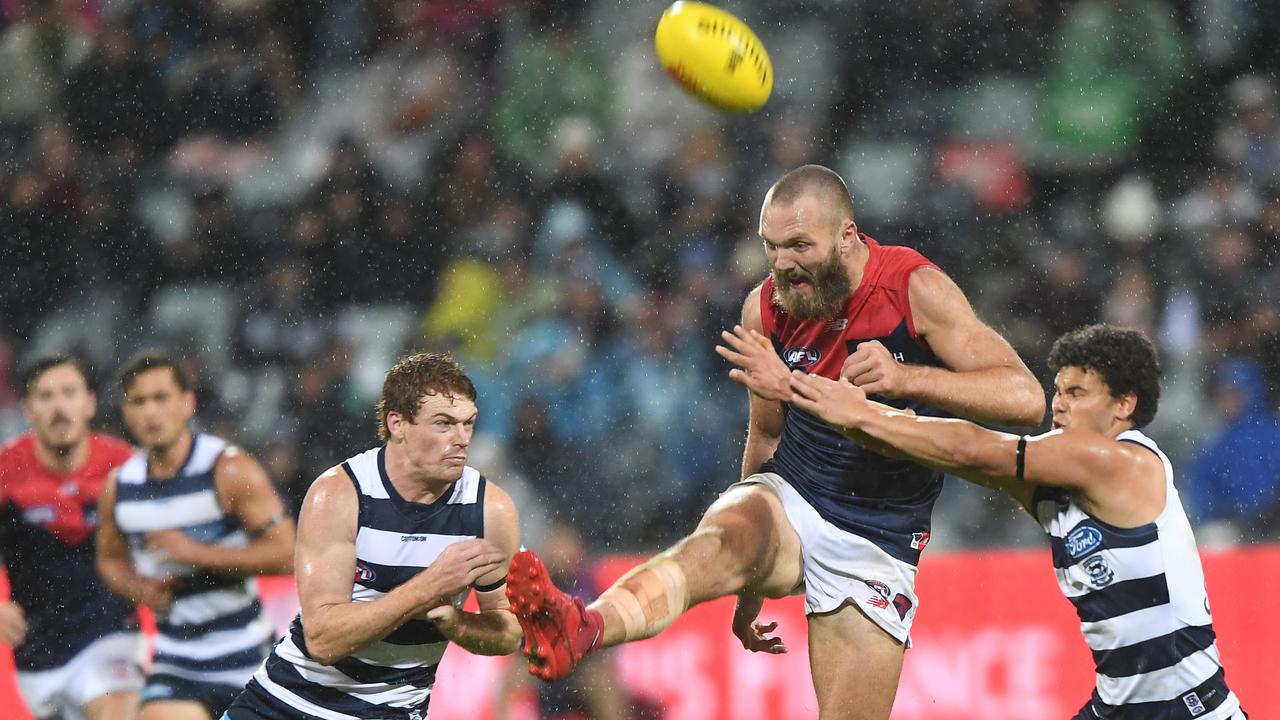
For all that toil, there came nine inside-50s and three behinds to one inside-50 for a goal in 12 minutes of play. That’s fixable.
The effort, contest, pressure, territory and structure are all positives in this small snapshot of the game.
UNDER THE MICROSCOPE
Melbourne must clean up its contested ball and ground ball work at both ends.
If I had said last week Melbourne would have four of the better players — Max Gawn, Clayton Oliver, Brayshaw and Viney — yet lose by 80 points, you have been laughed out of town. The simple reason was its midfielders held up their end of the bargain.
In terms of ground balls in Melbourne’s defensive 50m, they were -3, which is disappointing, but they also lost contested ball in defensive 50m by 11.
Melbourne lost contested ball by 17 and ground ball by 12 in the forward 50.
Their midfielders cannot do it all.
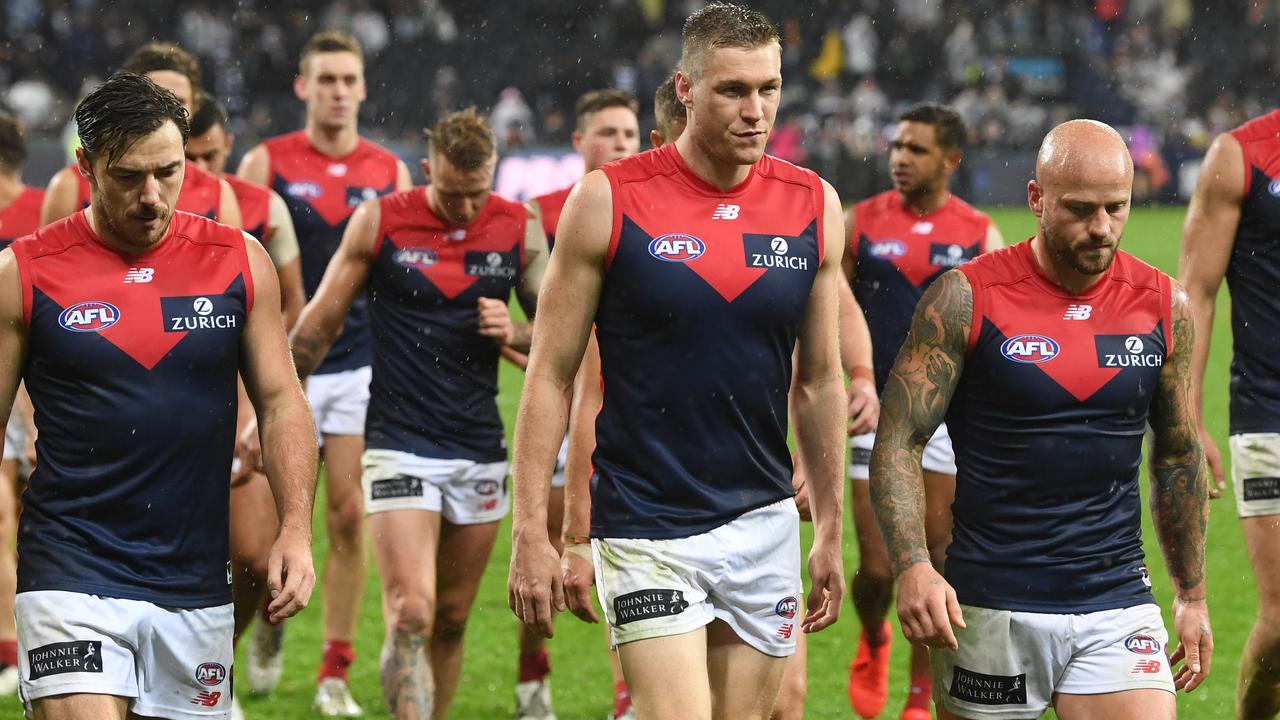
STAY IN THE BOAT
Melbourne didn’t get the result last week, but the numbers weren’t all bad.
The Demons’ contested ball differential was -1 in Round 1 and at quarter-time last week was -23, yet they recovered to finish +4.
Ground ball differential last week was +13, whereas it was zero in Round 1.
Inside 50s were -14 in Round 1, but +26 last week, and time-in-forward half was 66 per cent last week compared to 48 per cent the week before.
Oddly enough, Melbourne’s brand elements of contested ball, pressure and territory were evident in the last three quarters against Geelong.
But Simon Goodwin and his team still need to solve the Dee-Muda Triangle mystery inside forward 50m.


